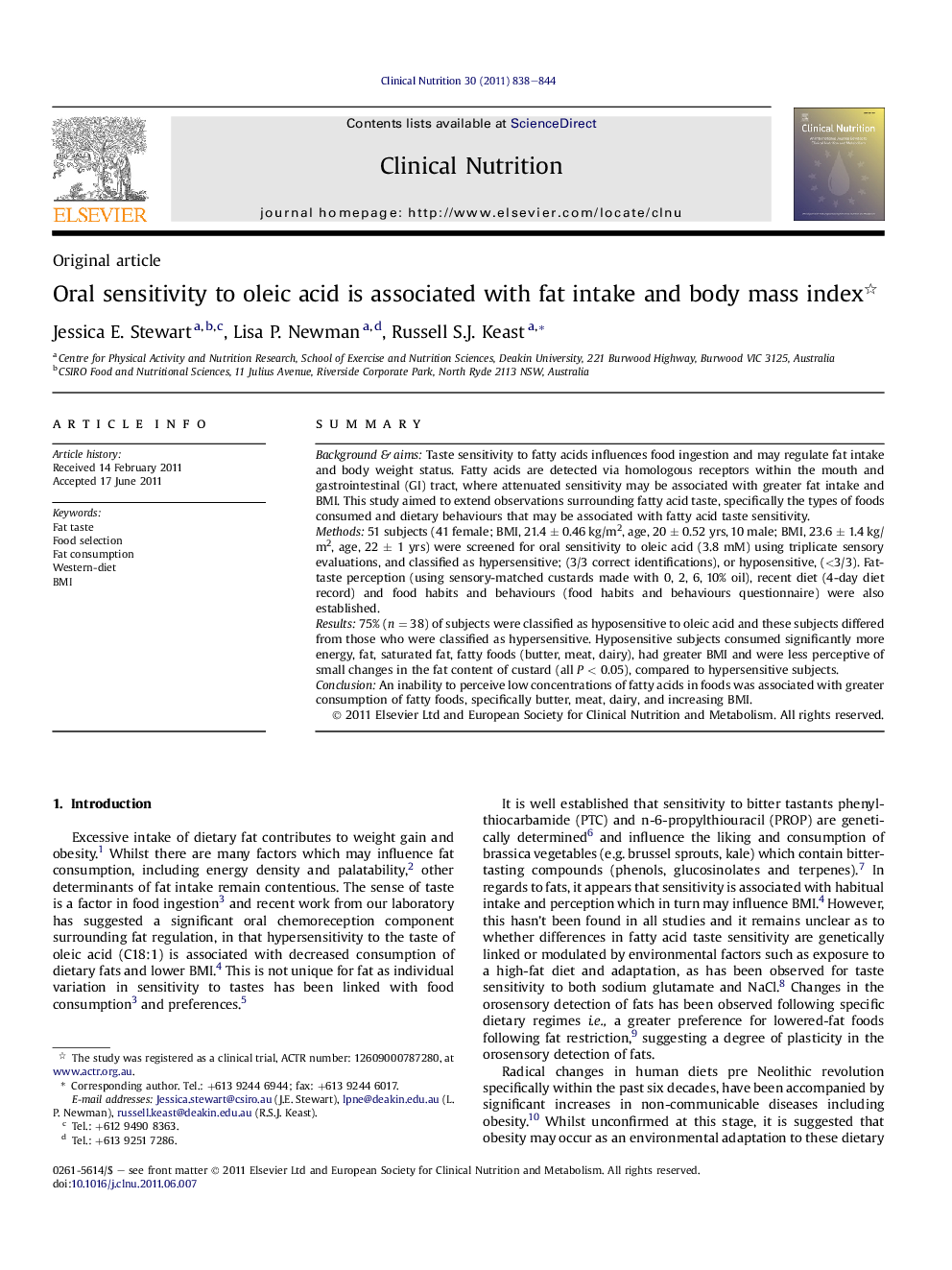| Article ID | Journal | Published Year | Pages | File Type |
|---|---|---|---|---|
| 5871985 | Clinical Nutrition | 2011 | 7 Pages |
SummaryBackground & aimsTaste sensitivity to fatty acids influences food ingestion and may regulate fat intake and body weight status. Fatty acids are detected via homologous receptors within the mouth and gastrointestinal (GI) tract, where attenuated sensitivity may be associated with greater fat intake and BMI. This study aimed to extend observations surrounding fatty acid taste, specifically the types of foods consumed and dietary behaviours that may be associated with fatty acid taste sensitivity.Methods51 subjects (41 female; BMI, 21.4 ± 0.46 kg/m2, age, 20 ± 0.52 yrs, 10 male; BMI, 23.6 ± 1.4 kg/m2, age, 22 ± 1 yrs) were screened for oral sensitivity to oleic acid (3.8 mM) using triplicate sensory evaluations, and classified as hypersensitive; (3/3 correct identifications), or hyposensitive, (<3/3). Fat-taste perception (using sensory-matched custards made with 0, 2, 6, 10% oil), recent diet (4-day diet record) and food habits and behaviours (food habits and behaviours questionnaire) were also established.Results75% (n = 38) of subjects were classified as hyposensitive to oleic acid and these subjects differed from those who were classified as hypersensitive. Hyposensitive subjects consumed significantly more energy, fat, saturated fat, fatty foods (butter, meat, dairy), had greater BMI and were less perceptive of small changes in the fat content of custard (all P < 0.05), compared to hypersensitive subjects.ConclusionAn inability to perceive low concentrations of fatty acids in foods was associated with greater consumption of fatty foods, specifically butter, meat, dairy, and increasing BMI.
